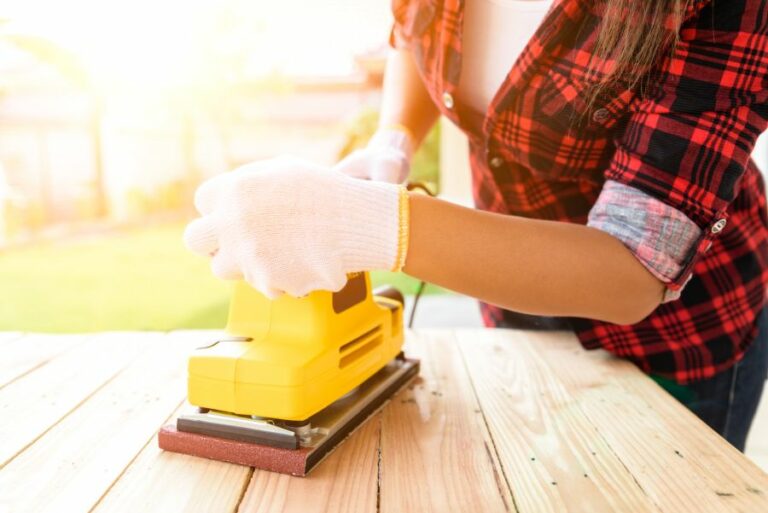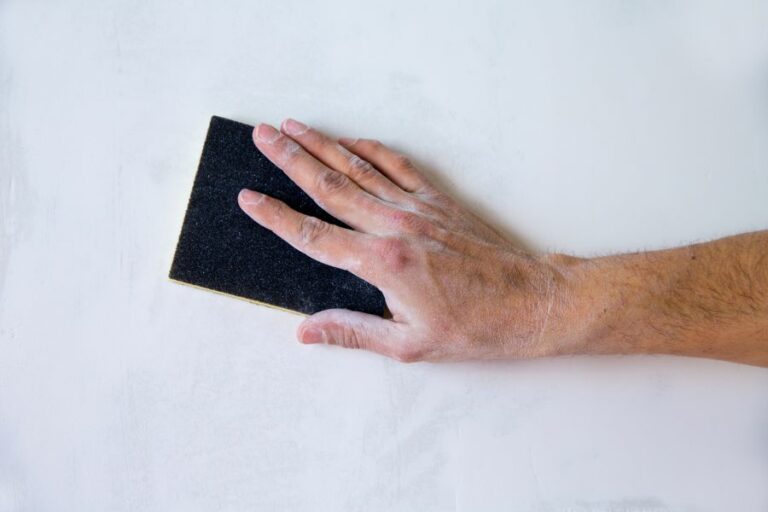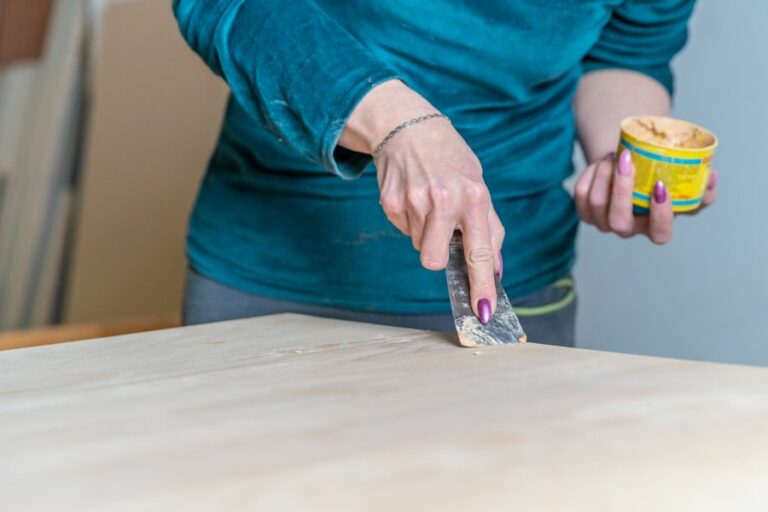Safe Chemical Surface Cleaning Options. What Pros Say
Ensuring a clean and safe environment is crucial, especially in today’s world, where maintaining hygiene can make all the difference. You’re in luck because we’ve got an extensive list of effective and safe chemical surface cleaning options for you. We’re about to dive into a discussion to explore these alternatives, so you can keep your surroundings immaculate without compromising health and safety.
Safe chemical surface cleaning options:
Safe chemical surface cleaning options include eco-friendly green cleaners made from sustainable, biodegradable, and non-toxic ingredients; DIY green cleaning solutions, like vinegar and water mixtures; hypochlorous acid, a powerful and non-toxic disinfectant; hydrogen peroxide, an environmentally friendly and versatile cleaner; and enzyme-based cleaners that harness the power of naturally occurring enzymes.

Looking for safe and eco-friendly chemical surface cleaning options? Dive into our comprehensive guide to discover alternatives that effectively clean and sanitize your home without causing harm. Read on to uncover the secrets of a chemical-free, squeaky-clean space!
Contents
- 1 Secure Chemical Surface Cleaning Solutions
- 2 Four Effective Techniques for Chemical Cleaning
- 3 Ideal Chemicals for Pristine Surface Cleaning
- 4 Non-Toxic Cleaning Techniques for a Safer Home
- 5 Chemical-Free Alternatives to Kitchen Cleaning
Secure Chemical Surface Cleaning Solutions
Maintaining a clean and healthy environment is crucial for everyone’s well-being. With numerous chemical surface cleaners available in the market, it’s essential to choose products that effectively remove dirt, germs, and bacteria without causing harm to people, animals, and the planet.
• Green Cleaners: Environmentally Friendly Solutions
Green cleaners are a category of chemical surface cleaning products made from sustainable, biodegradable, and non-toxic ingredients. These products have a minimal environmental impact and do not contain harsh chemicals that can cause irritation or harm to humans and animals.
Some popular green cleaning brands include Seventh Generation, Mrs. Meyer’s Clean Day, and Ecover. These brands offer effective cleaning solutions while minimizing environmental impact.
– DIY Green Cleaning Solutions
For an economical and eco-friendly alternative, consider making your DIY cleaning solutions. A simple mixture of white vinegar, water, and a few drops of essential oils can effectively clean surfaces while replacing harmful chemicals.
Baking soda and water also make an excellent non-toxic cleaner suitable for various surfaces, including stainless steel appliances and tiles.
• Hypochlorous Acid: An Effective Disinfectant
Hypochlorous acid (HOCl) is a powerful disinfectant derived from water and sodium chloride, formed when an electric current passes through a saltwater solution. This chemical compound has potent antimicrobial properties, making it highly effective in killing bacteria, fungi, and viruses.
It is safe for humans, animals, and the environment and is non-toxic, non-corrosive, and non-irritating.
HOCl is widely used in healthcare facilities, commercial cleaning applications, and even for home use. Various studies have proven its efficacy against pathogens, including the novel coronavirus.
Several brands, such as Briotech and Force of Nature, offer HOCl-based cleaning solutions that are safe and highly effective.
• Hydrogen Peroxide: A Versatile Cleaner
Hydrogen peroxide is a safe and effective cleaning agent commonly used for multiple purposes, including surface cleaning, stain removal, and disinfection. It is environmentally friendly, decomposing into water and oxygen, leaving no harmful residue behind.
A 3% hydrogen peroxide solution can be used on various surfaces, including countertops, cutting boards, and bathroom fixtures, to eliminate germs and bacteria. Additionally, it can be combined with other cleaning agents like baking soda and vinegar for enhanced cleaning results.
• Enzyme-based Cleaners: Harnessing the Power of Nature
Enzyme-based cleaning products contain naturally occurring enzymes that break down organic materials, including grease, stains, and odors. These products are effective in removing stubborn dirt without resorting to harsh chemicals that can damage surfaces and harm the environment.
Enzyme cleaners are suitable for various applications, including cleaning carpets, upholstery, floors, and pet stains. A popular enzyme-based cleaner is Biokleen Bac-Out Stain & Odor Remover, which utilizes a unique blend of enzymes and live bacteria to tackle tough stains and odors effectively.
• Quaternary Ammonium Compounds (QACs)
Quaternary ammonium compounds (QACs) are widely used disinfectants in the cleaning industry due to their broad-spectrum antimicrobial properties. QACs effectively kill bacteria, fungi, and viruses on surfaces, making them a popular choice in healthcare, food service, and many other industries.
While QACs are generally considered safe when used according to the manufacturer’s instructions, there are concerns regarding their potential environmental impact and the development of antimicrobial resistance.
Hence, it’s essential to use QACs responsibly and explore other eco-friendly alternatives for routine cleaning tasks.
• Tips for Safe Chemical Surface Cleaning
- Choose eco-friendly, non-toxic cleaning products that do not cause harm to the environment or pose health risks to humans and animals.
- Carefully read and follow the manufacturer’s instructions and safety precautions when using chemical cleaners.
- Utilize proper personal protective equipment, such as gloves and goggles, to minimize chemical exposure.
- Opt for reusable or biodegradable cleaning tools like cloth wipes and natural fiber scrub brushes instead of disposable items.
- Dispose of chemical waste responsibly by following local guidelines and recommendations.
In conclusion, using safe chemical surfaces cleaning options like green cleaners, hypochlorous acid, hydrogen peroxide, and enzyme-based cleaners is crucial for maintaining a clean and healthy environment.
By selecting environmentally friendly and non-toxic cleaning products, we contribute to a sustainable future while safeguarding human health and preserving our planet.
Four Effective Techniques for Chemical Cleaning
Chemical cleaning is an essential process in maintaining the performance and efficiency of industrial equipment and systems. It involves the use of chemical solutions to remove unwanted deposits, contaminants, and corrosion from the surfaces of metal and other materials.
1. Pickling
Pickling is a chemical cleaning process that uses acidic solutions, typically containing a combination of strong acids like hydrochloric or sulfuric acid, to remove rust, scale, and other impurities from metal surfaces.
This process is particularly useful for treating carbon steel, stainless steel, and copper materials. The acid concentration and the duration of the pickling process depend on the type of metal and the degree of contamination.
Recommendation: Pickling is an effective method for removing heavy rust and scale, especially on large pieces of equipment or piping systems. However, it is essential to neutralize the acidic residues after pickling to avoid further corrosion.
2. Passivation
Passivation is a chemical treatment that enhances the corrosion resistance of stainless steel and other materials by forming a thin, protective oxide layer on the surface. Passivating solutions are usually composed of nitric or citric acid mixed with water.
The concentration and duration of the passivation process depend on the type of material and the desired level of corrosion resistance.
Recommendation: Passivation is particularly beneficial for stainless steel equipment, which is prone to surface contamination and corrosion.
It is not suited for cleaning heavily contaminated or rusted surfaces. Instead, it should be applied after cleaning and pickling to restore the metal’s natural passive film.
3. Solvent Cleaning
Solvent cleaning is a chemical cleaning method that uses organic solvents to dissolve and remove grease, oil, and other non-polar contaminants from metal surfaces. Common solvents include aliphatic and aromatic hydrocarbons, alcohols, ketones, and chlorinated solvents.
The selection of the solvent depends on the type of contaminants and the material being cleaned.
Recommendation: Solvent cleaning is effective for removing oily deposits and light contaminants from metal surfaces, especially in precision equipment and sensitive electronic components. However, it may not be suitable for removing heavy rust, scale, or mineral deposits.
Ensure proper ventilation and safety measures when using solvents, as they can pose health and environmental risks.
4. Alkaline Cleaning
Alkaline cleaning involves the use of alkaline solutions, such as sodium hydroxide or potassium hydroxide, to remove dirt, grease, oil, and other organic contaminants from metal surfaces.
This method is particularly effective for cleaning aluminum, zinc, and other materials that are susceptible to acid corrosion. The concentration of the alkaline solution, as well as the temperature and duration of the cleaning process, depend on the type of material and the level of contamination.
Recommendation: Alkaline cleaning is a versatile chemical cleaning method suitable for a wide range of materials and contaminants. It is particularly useful for cleaning sensitive materials that cannot withstand acidic treatments.
After the cleaning process, it is essential to thoroughly rinse the surface with water to remove any residual alkaline solution.
• In Conclusion
Each of these four chemical cleaning methods has its strengths and limitations. In industrial settings, it is not uncommon to use a combination of these techniques to achieve the desired level of cleanliness and corrosion protection.
When choosing a chemical cleaning method, consider the type of material being treated, the nature of the contaminants, and the desired outcome. Furthermore, always follow appropriate safety protocols and environmental regulations during the chemical cleaning process.
By understanding and properly implementing these techniques, you can effectively maintain and prolong the service life of your equipment and systems.
| 4 Methods of Chemical Cleaning | |
|---|---|
| 1 | Acid Cleaning |
| 2 | Alkaline Cleaning |
| 3 | Detergent Cleaning |
| 4 | Solvent Cleaning |
Ideal Chemicals for Pristine Surface Cleaning
Cleaning various surfaces in your home or workplace can be a challenging task. The choice of the right cleaning chemical will determine the effectiveness and efficiency of your cleaning process.
• Alkaline Cleaners
Alkaline cleaners are a common choice for cleaning many surfaces, particularly hard ones like countertops and floors.
These cleaners contain alkaline salts that effectively break down and remove dirt, grease, and stains. Some popular examples of alkaline cleaners include ammonia, sodium hydroxide, and borax.
– Applications
Alkaline cleaners are recommended for cleaning:
- Greasy and oily surfaces
- Kitchen countertops
- Ovens and stovetops
- Grout and tile floors
- Concrete surfaces
Remember to always wear gloves and use appropriate ventilation when working with alkaline cleaners, as they can potentially cause skin irritation and hazards if not handled properly.
• Acidic Cleaners
Acidic cleaners are powerful cleaning agents that are particularly effective in removing mineral deposits and stains.
They work by dissolving mineral deposits and breaking down tough stains on surfaces. Common examples of acidic cleaners include acetic acid (vinegar), citric acid, hydrochloric acid, and sulfuric acid.
– Applications
Acidic cleaners are ideal for:
- Removing mineral buildup in coffee pots and showerheads
- Cleaning toilet bowls and removing rust stains
- Removing calcium deposits on bathroom fixtures and tiles
- Descaling dishwashers and washing machines
- Cleaning glass surfaces
When using acidic cleaners, always follow the manufacturer’s guidelines and use protective gear, such as gloves and goggles, to avoid any harmful effects on your skin and eyes.
• Neutral Cleaners
Neutral cleaners have a pH level close to 7 and are mild cleaning agents. They are typically used for routine cleaning tasks and can be used on a wide variety of surfaces. Some examples of neutral cleaners include all-purpose cleaners, dish detergents, and mild detergents.
– Applications
Neutral cleaners are suitable for:
- Daily cleaning of countertops and appliances
- Mopping floors (tile, wood, and laminate)
- Washing windows and glass surfaces
- Cleaning upholstery and fabrics
- Wiping down electronic devices
When using neutral cleaners, pay attention to the product’s instructions to ensure you are using the correct dilution and application method.
• Enzymatic Cleaners
Enzymatic cleaners contain enzymes that break down organic matter and stains by using specific types of enzymes for specific types of organic substances. For example, protease enzymes break down protein-based stains, while lipase enzymes target fat and oil-based stains.
– Applications
Enzymatic cleaners are excellent for:
- Cleaning pet stains and odors on carpets and upholstery
- Removing blood and protein-based stains on fabrics
- Cleaning drains and garbage disposals
- Removing food stains from kitchen surfaces
- Tackling mold and mildew
Follow the directions provided on the enzymatic cleaner label for optimal results, and allow the product to sit for the appropriate amount of time to ensure the enzymes have time to work effectively.
• Disinfectants and Sanitizers
Disinfectants and sanitizers are essential cleaning agents that are specifically designed to reduce, eliminate, or inhibit the growth of harmful microorganisms, such as bacteria, viruses, and fungi.
Common examples of disinfectants and sanitizers include chlorine bleach, hydrogen peroxide, quaternary ammonium compounds, and alcohol-based cleaners.
– Applications
These chemicals are essential for:
- Cleaning areas prone to bacteria and viruses (kitchens, bathrooms, and high-touch surfaces)
- Sanitizing food preparation surfaces and cutting boards
- Disinfecting healthcare settings and laboratories
- Cleaning toys, devices, and other items that come into contact with multiple users
When using disinfectants and sanitizers, always adhere to the recommended contact time and concentration levels to achieve the desired results.
• Conclusion
In conclusion, the choice of chemical for surface cleaning largely depends on the type of surface, the nature of the dirt or stain, and the required level of cleanliness.
Familiarize yourself with the different options available and their appropriate applications to achieve a clean and hygienic environment.
Non-Toxic Cleaning Techniques for a Safer Home
Cleaning our homes and offices is essential for maintaining a healthy living and working environment. However, many conventional cleaning products contain harmful chemicals, which can be detrimental to our health and the environment.
• Eco-Friendly Ingredients to Use in Your Cleaning Solutions
Here is a list of eco-friendly and non-toxic ingredients that can be used to prepare various cleaning solutions:
– White Vinegar
White vinegar is an excellent natural cleaner for various surfaces, including glass, countertops, and floors. It effectively cuts through grease, removes detergent buildup, and eliminates foul odors. Mix equal parts of water and white vinegar to create an all-purpose cleaner.
– Baking Soda
Baking soda is a gentle abrasive that can be used to clean and polish a wide range of surfaces, such as sinks, bathtubs, and ovens. To create a powerful cleaning paste, mix baking soda with water until it forms a thick consistency.
– Lemon Juice
Lemons are not only great for cooking but also serve as a natural and powerful cleaning agent. The citric acid found in lemons is an excellent degreaser and can be used to make surfaces shine. Use lemon juice alone or mixed with white vinegar to clean kitchen counters, sinks, and cutting boards.
– Castile Soap
Castile soap is a gentle, plant-based cleaner that can be used for cleaning various surfaces and more. It is an all-natural and biodegradable alternative to toxic, synthetic soaps. To make a simple cleaning solution, dilute the castile soap in water as per the label instructions.
– Essential Oils
Essential oils not only smell great but also have natural antimicrobial properties. Some popular essential oils for cleaning include lavender, tea tree, eucalyptus, and peppermint. Adding a few drops to your homemade cleaning solutions will give them a pleasant scent while enhancing their cleaning power.
• Eco-Friendly Cleaning Techniques and Tools
Besides using eco-friendly cleaning solutions, employing green cleaning techniques and tools can further help maintain a toxin-free environment.
– Green Cleaning Techniques
- Steam Clean: Steam cleaning is an effective and eco-friendly method for sterilizing and cleaning various surfaces, including carpets, floors, upholstery, and tiles, without using any harsh chemicals. Invest in a steam cleaner for a pollutant-free and deep cleaning experience.
- Microfiber Cloths: Using microfiber cloths can greatly reduce your reliance on cleaning chemicals. They are highly absorbent and effective in capturing dust, dirt, and bacteria from surfaces without requiring additional cleaning agents.
- Use brushes: Natural bristle brushes are effective for cleaning dirt and grime from various surfaces. Opt for bamboo handles and replaceable brush heads to minimize plastic waste.
– Ditch Paper Towels
To reduce waste, consider using reusable cloths and rags for cleaning instead of disposable paper towels. Cloth napkins, old t-shirts, and microfiber cloths are excellent alternatives for wiping down surfaces, and they can be washed and reused for a long time.
– DIY Eco-Friendly Cleaning Recipes
Here are some simple and effective DIY cleaning recipes that use non-toxic ingredients like white vinegar, baking soda, and lemon juice:
- Glass Cleaner: Mix 1 part water with 1 part white vinegar in a spray bottle. Shake well, and use this solution to clean windows, mirrors, and other glass surfaces.
- All-Purpose Cleaner: Combine 2 cups of water, a cup of white vinegar, and 20 drops of lemon essential oil in a spray bottle. Shake well to mix and use it to clean countertops, sinks, and other surfaces.
- Kitchen Degreaser: Mix 2 cups of hot water, a cup of white vinegar, and 1 tablespoon of castile soap in a spray bottle. Spray this solution onto greasy and oily surfaces and let it sit for a few minutes before wiping it clean.
- Bathroom Cleaner: Add cup of baking soda and a cup of white vinegar in a bowl. Stir until it forms a thick paste. Apply this paste on sinks, bathtubs, and tiles, and scrub gently before rinsing clean.
- Carpet Freshener: Mix 1 cup of baking soda and 15 drops of essential oil of your choice in a container. Sprinkle the mixture onto the carpet, let it sit for 30 minutes, then vacuum.
In conclusion, cleaning without toxic chemicals is not only possible but also effective with the right ingredients, tools, and techniques. By using eco-friendly alternatives and following green cleaning practices, we can contribute to a healthier and cleaner environment for ourselves and future generations.
Cleaning Task | Non-toxic Cleaning Solution |
|---|---|
All-Purpose Cleaner | 1 part water, 1 part white vinegar, few drops of dish soap |
Glass Cleaner | 1 part water, 1 part white vinegar, few drops of lemon juice |
Bathroom Cleaner | 1 part water, 1 part white vinegar, few drops of tea tree oil, 1/2 part baking soda |
Kitchen Cleaner | 1 part water, 1 part white vinegar, few drops of dish soap, few drops of lemon juice |
Floor Cleaner | 1 part water, 1/2 part white vinegar, few drops of dish soap, few drops of essential oil (optional) |
Carpet Deodorizer | Baking soda, few drops of essential oil (optional) |
Air Freshener | Water, few drops of essential oil in a spray bottle |
Chemical-Free Alternatives to Kitchen Cleaning
• Introduction
Chemical kitchen cleaners are effective at removing dirt, grime, and bacteria, but they can also carry harmful toxins that are dangerous for humans, pets, and the environment.
As more people become aware of the harmful effects of chemical cleaners, a growing demand for natural and safe cleaning alternatives has surfaced.
• Vinegar and Baking Soda: The Power Duo
Vinegar and baking soda are natural and eco-friendly cleaning agents that can effectively clean and disinfect your kitchen. In particular, white vinegar is mildly acidic, allowing it to break down dirt, grease, and mineral deposits.
Baking soda, on the other hand, is a gentle abrasive that can scrub away stubborn stains and residue without scratching surfaces.
– How They Work Together
When vinegar and baking soda are combined, they create a chemical reaction that releases carbon dioxide gas, creating a powerful fizzing action. This fizz helps to dislodge dirt and grime quickly, making it easier to clean surfaces in your kitchen.
Additionally, vinegar’s acidity neutralizes baking soda’s alkalinity, which enhances its ability to break down and remove organic matter.
*Note: While vinegar and baking soda are generally safe and non-toxic, they should not be used on natural stone surfaces like marble, granite, or limestone, as they can cause etching.
• Applications of Vinegar and Baking Soda in the Kitchen
– Cleaning Countertops and Cutting Boards
Vinegar is an excellent disinfectant and helps to kill bacteria while removing impurities from countertops and cutting boards. Simply mix equal parts water and vinegar in a spray bottle, spray the surface, and let it sit for a few minutes. Then, wipe it clean with a sponge or damp cloth.
When dealing with stubborn stains or residues, a paste made from baking soda and water can be used. Apply the paste and let it sit for about 15-20 minutes before scrubbing with a soft sponge and rinsing with clean water.
– Degreasing the Stove and Oven
To remove grease and grime from your stove, combine equal parts vinegar and water in a spray bottle and generously apply the solution to the affected areas. Let it sit for a few minutes before wiping it down with a sponge or cloth. Rinse with clean water and dry with a towel.
To clean your oven, create a paste of baking soda and water and spread it evenly across the interior. Let it sit for a few hours or even overnight before scrubbing it off with a sponge or damp cloth. Wipe down the oven with a cloth dipped in vinegar to remove any remaining residue.
– Cleaning Drains and Garbage Disposal
Pour a half cup of baking soda down the drain, followed by one cup of vinegar. The resulting reaction will clear out any lingering odors, residue, and bacteria. Wait 5-10 minutes for the solution to work, then flush with hot water. Do this once a month to maintain clean drains.
• Conclusion
Vinegar and baking soda are powerful cleaning combinations that can effectively replace chemical kitchen cleaners. They are safe, natural, and eco-friendly, offering a healthier alternative for your home, family, and the environment.
By adopting these alternative cleaning agents, you can maintain a clean and hygienic kitchen without relying on harsh chemicals.







